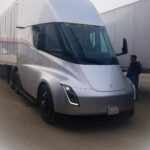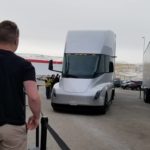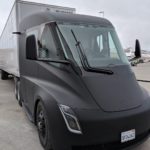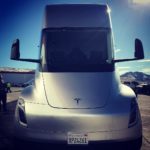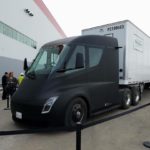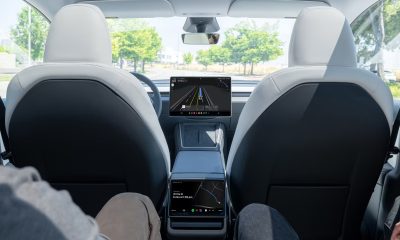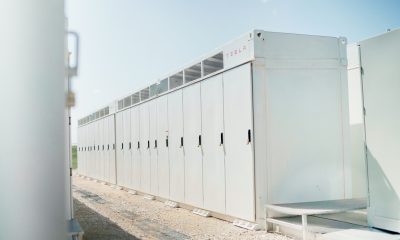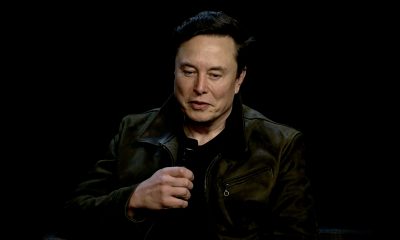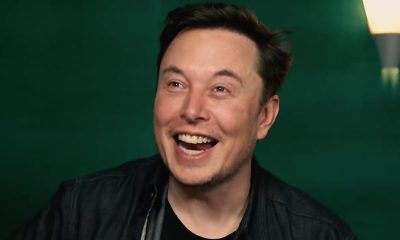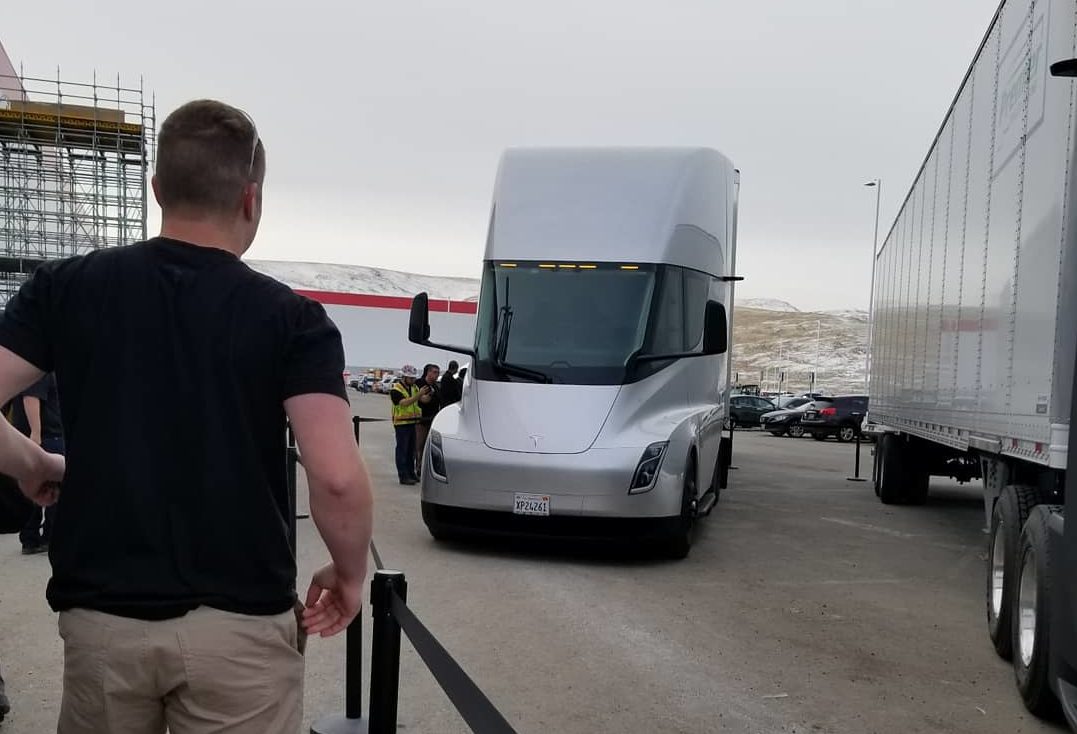
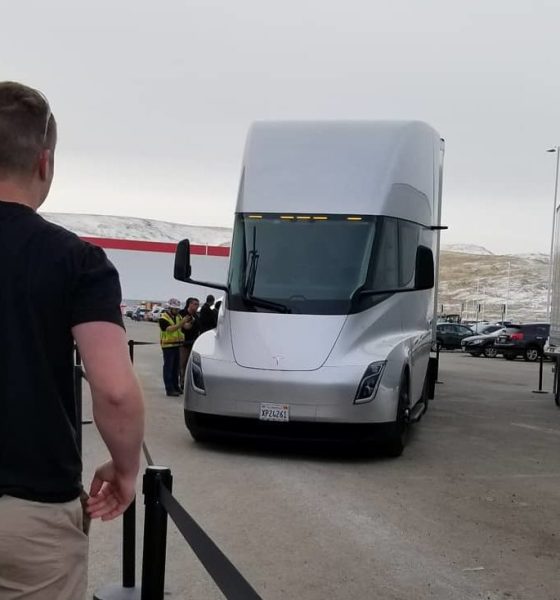
News
Tesla Semi begins production cargo runs from Gigafactory 1 to Fremont factory
Tesla CEO Elon Musk has revealed the first photo of a Tesla Semi, with a trailer full of battery packs in tow, that’s on its way to complete the first production cargo trip for the company. The news follows our recent report that a Tesla Semi was spotted traveling between the company’s Fremont, Calif. factory and Gigafactory facility in Sparks, Nevada.
“First production cargo trip of the Tesla Semi heavy-duty truck, carrying battery packs from the Gigafactory in the Nevada mountains to the car factory in California,” said Musk in his Instagram post.
A silver Tesla Semi, the company’s 500-mile all-electric long-range hauler – the same version that was recently spotted doing a tire-shredding acceleration run – and shorter range electric truck in Matte Black, can be seen in Musk’s photo. The all-electric trucks are framed by the unmistakable Nevada mountains surrounding the Gigafactory.
https://www.instagram.com/p/BgCJlKbFckb/
With a distance spanning just over 250 miles (400 km) between Tesla’s Nevada-based battery facility and its Fremont factory, both the long-range and shorter range Tesla Semi can presumably travel the entire length without needing to recharge.
Considering the over 4,000 feet total elevation drop from Tesla’s Gigafactory 1 and its California factory, Tesla Semi’s regenerative braking system would recapture loss energy on descents and result in a range increase in certain areas of the journey.
RELATED: Tesla Semi’s battery pack and overall weight explored
Today’s reveal by Musk validates a statement made by Tesla’s VP of Truck programs Jerome Guillen when he revealed that the company would become its own Tesla Semi customers by using the vehicles to transport components between its facilities.
“Tesla will be the first customer for its own truck. So we will use our own trucks to carry cargo in the US between our different facilities. We have (an) assembly factory in California, we have a battery factory in Nevada, so we’ll use our truck to carry things in between,” said Guillen when speaking at a summit in The Netherlands late last year.
- [Photo: proper_hanniel via Instagram]
- [Photo: momisflor via Instagram]
- [Photo: goochenator via Instagram]
- [Photo: mattyplop via Instagram]
- [Photo: dmackdaddy via Instagram]
Production of the Tesla Semi is expected to take place sometime in 2019. The company is working with its largest customers on the design and build out of its ultra-high powered Megacharger, The Tesla Semi charging stations will be installed at key locations that are frequently traveled by fleet operators and spaced close enough together so that Tesla Semi drivers have enough range to return back to their loading docks without needing to recharge.
PepsiCo, one of the largest Tesla Semi customers to date having ordered 100 trucks, noted that an agreement to share charging facilities for the Semi would help the electric truck service a wider area.
“We have a lot of in-house capability around energy and engineering, and certainly, Tesla brings their expertise to the table on energy and charging,” said PepsiCo executive Mike O‘Connell.
Other high-profile companies such as UPS, UAE-based Bee’ah and Norway’s Postal Service, among many smaller operations, have committed to reducing their operations environmental impact by either replacing or augmenting their fleet with Tesla Semi trucks.
News
Tesla job listings hint at 24/7 Robotaxi operations in several states
The job opening is active in several regions, including Austin, Palo Alto, Orlando, Tampa, Doral, Houston, Dallas, Tempe, and Las Vegas, as of writing.

Tesla seems to be laying the groundwork for a 24/7 Robotaxi service across several states. This was hinted at by a substantial number of interesting Robotaxi-related job listings that have been posted on the company’s Careers website.
24/7 Robotaxis and Night Shift Specialists
A look at Tesla’s official Careers website shows that the company is currently looking for multiple Robotaxi Fleet Support Specialists for the Night Shift. The listing itself describes a role focused on maintaining vehicles for “smooth 24/7 operations,” hinting at the company’s next steps in its efforts to ramp its autonomous ride-hailing service across several U.S. cities.
“We are looking for a highly motivated and passionate individual to join our Autopilot Fleet Team. As Fleet Support Specialist, you will play a crucial role in ensuring that all our vehicles are in excellent condition at all times, supporting smooth 24/7 vehicle operations,” the job listing read.
The job opening is active in several regions, including Austin, Palo Alto, Orlando, Tampa, Doral, Houston, Dallas, Tempe, and Las Vegas, as of writing. This suggests that Tesla really is looking at a potential multi-state rollout strategy for its Robotaxi service, likely in the near future.
Musk targets major Robotaxi fleet growth by year’s end
Tesla’s Robotaxi pilot is still in early stages, but CEO Elon Musk recently hinted that substantial updates are coming soon to the Austin and Bay Area programs. Speaking on the All-In podcast, Musk said Tesla aims to expand its Robotaxi fleet to 500 vehicles in Austin and 1,000 in the Bay Area before the end of 2025.
“We’re scaling up the number of cars to, what happens if you have a thousand cars? Probably we’ll have a thousands cars or more in the Bay Area by the end of this year, probably 500 or more in the greater Austin area,” Musk said.
With just two months left in the fourth quarter, Tesla’s AI team is facing a busy ramp-up period that could mark the company’s most ambitious real-world test of its autonomous driving program yet.
Energy
Tesla and Samsung SDI in talks over new US battery storage deal: report
The update was related by industry sources and initially reported by South Korean news outlets.

Recent reports have suggested that Tesla and Samsung SDI are in talks over a potential partnership to supply batteries for large-scale energy storage systems (ESS).
The update was related by industry sources and initially reported by South Korean news outlets.
ESS batteries to be built at Samsung’s Indiana plant
As noted in a report from Korea JoongAng Daily, the demand for energy storage systems has been growing rapidly in North America, thanks in no small part to the surge in AI investments across numerous companies. With this in mind, Tesla has reportedly approached Samsung SDI about a potential battery supply deal.
The deal is reportedly worth over 3 trillion Korean won (approximately $2.11 billion) and will span three years, according to The Korea Global Economic Daily. A battery supply deal with Samsung SDI could make sense for Tesla as the company already has a grid-scale battery, the Megapack, which is perfect for industrial use. Samsung SDI could simply supply cells for the EV maker.
Production of the batteries would reportedly take place at Samsung SDI’s joint venture factory with Stellantis in Indiana, which is currently under construction. Samsung SDI recently announced plans to use part of that plant’s EV lines to produce cells for ESS, with a targeted capacity of 30 GWh by the end of next year.
Tesla and Samsung’s partnership
At present, only a handful of manufacturers, including Korea’s LG Energy Solution, Samsung SDI, SK On, and Japan’s Panasonic, are capable of producing energy storage-scale batteries domestically in the United States. A Samsung SDI official issued a comment about the matter, stating, “Nothing has been finalized regarding cooperation with Tesla.”
The possible energy storage system deal adds another layer to Tesla’s growing collaboration with Samsung, which is already in line as a partner in the upcoming production of Tesla’s AI5 and AI6 chips. Early sample manufacturing of the AI6 is expected to begin in South Korea, with mass production slated for Samsung’s Texas-based Taylor foundry when it starts operations.
The AI6 chip will power Tesla’s next wave of high-volume projects, including the Optimus humanoid robot and the autonomous Cybercab service. Musk has called the partnership with Samsung a “real collaboration,” adding that he personally plans to “walk the line” at the Taylor facility to speed up progress.
Elon Musk
Elon Musk maps out Tesla’s AI chip iterations, and they’re pretty nutty
Based on the CEO’s post, it appears that Tesla is already exploring generations as far as AI8.
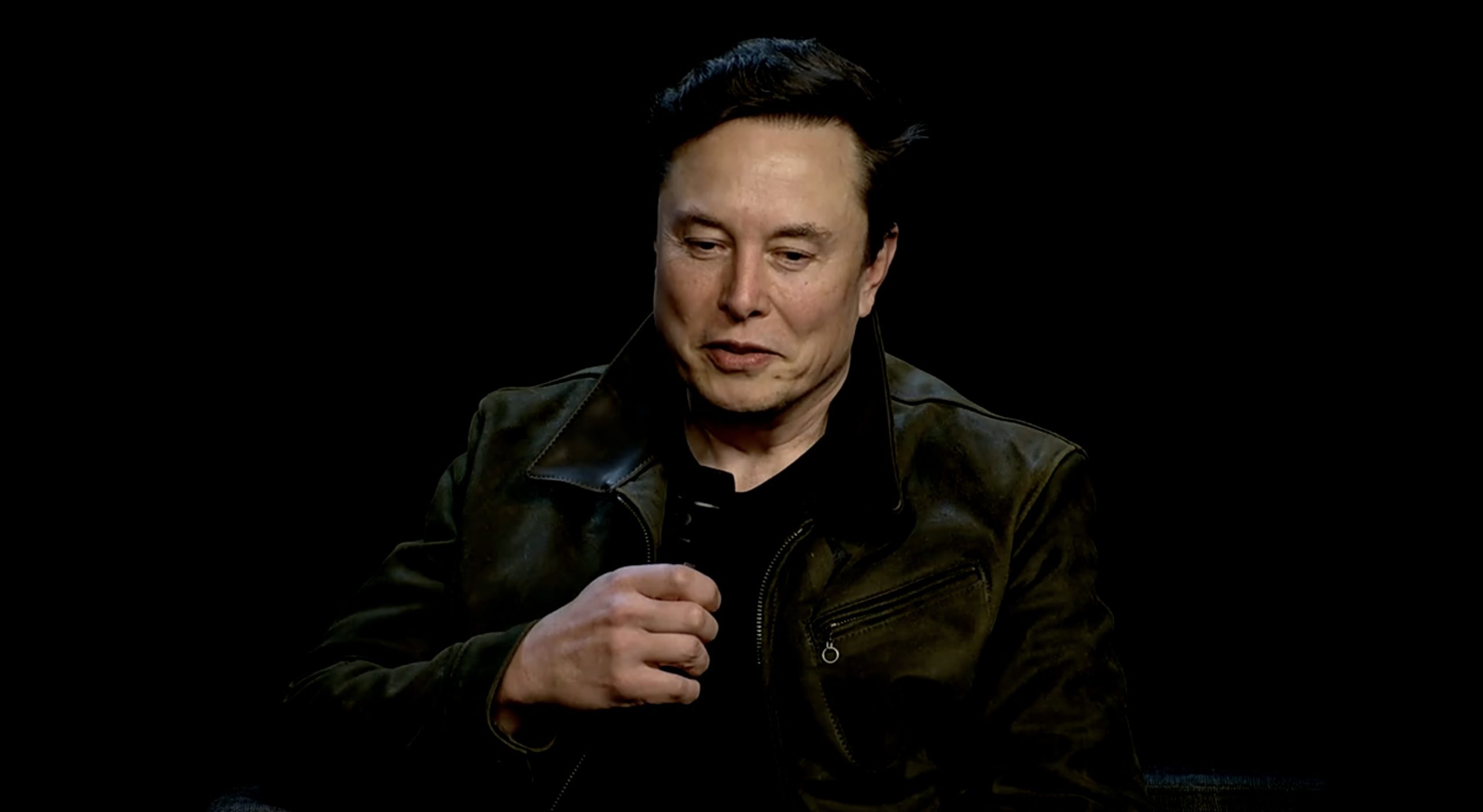
Elon Musk recently revealed new details about Tesla’s next-generation AI5 chip while hinting at even more advanced iterations of its custom silicon.
Based on the CEO’s post, it appears that Tesla is already exploring generations as far ahead as AI8.
Elon Musk teases Tesla’s chip development
In his X post, Musk stated that he had just completed a design review with Tesla’s chip engineers in California and Texas for the company’s upcoming AI5 chip. This was not surprising at all, considering that Musk has been discussing AI5 for quite some time now. What was surprising, however, were his comments that followed.
“And AI6 and AI7 will follow in fast succession. AI8 will be out of this world,” he wrote in his post, adding in a follow-up that his chip design review would be continuing the next day, followed by an Optimus demo review.
Considering that Tesla is currently rolling out a Robotaxi service using cars that are equipped with AI4 chips, some industry watchers have expressed interest in why the company is developing several generations’ worth of silicon for the company’s products. Inasmuch as AI4 might be enough for FSD and the Robotaxi rollout today, however, products such as Optimus might benefit from a more advanced chip.
Even AI5 will already be insanely impressive
During Tesla’s Q3 2025 earnings call, Musk described AI5 as “an amazing design” that represents a full evolution from the AI4 chip currently used in its vehicles and data centers. The new hardware, which will be manufactured by both Samsung in Texas and TSMC in Arizona, is expected to deliver up to 40x performance gains compared to its predecessor.
Tesla’s in-house engineering team redesigned the chip from the ground up, removing traditional components such as GPUs and image signal processors to improve efficiency and power måanagement. Musk said the chip now fits within a half-reticle design, calling it “a beautiful chip” into which he’s “poured so much life energy.”
Musk confirmed Tesla’s plan to create an oversupply of AI5 chips that could power not only vehicles but also humanoid robots and data centers. He emphasized that Tesla’s vertically integrated approach, designing both hardware and software, gives it a unique edge in scaling AI applications.
-
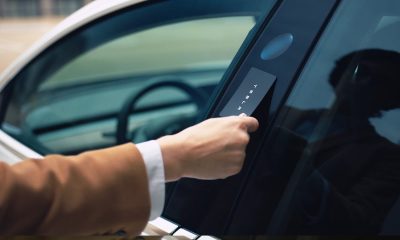
 News2 weeks ago
News2 weeks agoTesla might be doing away with a long-included feature with its vehicles
-
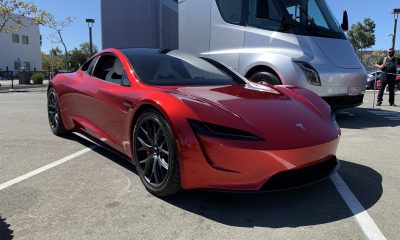
 News2 weeks ago
News2 weeks agoTesla updates fans on its plans for the Roadster
-

 Elon Musk2 weeks ago
Elon Musk2 weeks agoElon Musk: Grok 5 now has a 10% chance of becoming world’s first AGI
-

 News2 weeks ago
News2 weeks agoTesla is ramping up its hiring for the Cybercab production team
-

 News2 weeks ago
News2 weeks agoTesla rolled out a new feature with FSD v14 to fix a major complaint
-
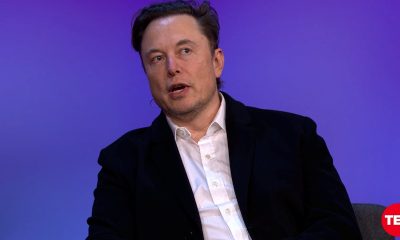
 Elon Musk2 weeks ago
Elon Musk2 weeks agoElon Musk hits back at former Tesla employee who disagrees with pay package
-
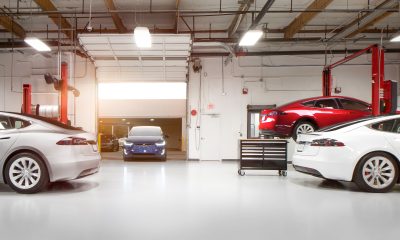
 News2 weeks ago
News2 weeks agoTesla just made Service even easier and more convenient
-

 News2 weeks ago
News2 weeks agoTesla Model Y L becomes China’s 4th best-selling mid-to-large SUV in its first month of sales

